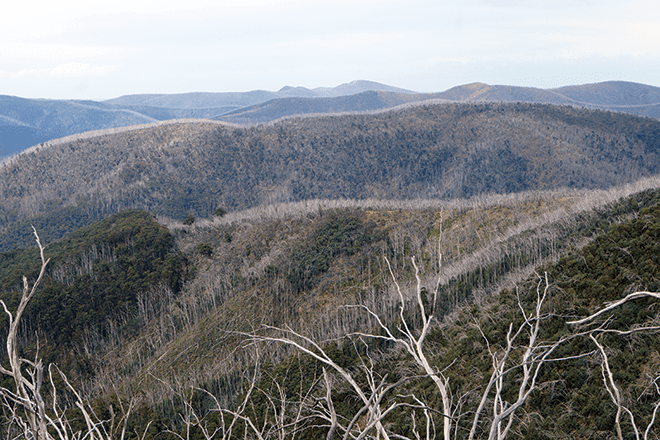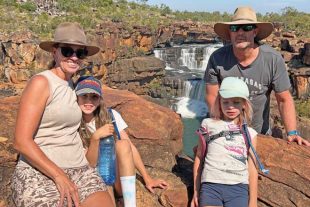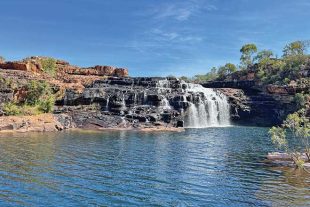AFTER arriving back in Melbourne on the Spirit of Tasmania, our intention was to work our way back to Brisbane via the parts of the Victorian High Country you can access with a caravan and then head across the NSW border and up into the Snowy Mountains from the west.
These areas are totally off-limits to caravans in the winter months when snow and ice can be on the road, so it seemed like a good idea to make our luck and see where we ended up.
Heading east to Traralgon, the staff at the tourist information centre provided excellent advice on which roads were most accessible to us and eliminated some of the dirt road options.
The plan was really taking shape. We headed on to Sale where all the servos in town were having a good old-fashioned fuel price war, and diesel was a staggeringly cheap 89.9 cents per litre. You do notice in the small towns with competition that the independents are the place to go because they have good-quality fuel based on high-volume turnovers thanks to normally lower prices. And they know how to stick it to the monopoly bullies, Coles and Woolies, to maintain their market share of sales.
At Bairnsdale we turned north and headed along the Omeo Highway, tracking parallel with the twisting but scenic path of the Tambo River. The night was spent camped in the backyard of the Little River Inn pub at the tiny town of Ensay.
A quaint place full of character, it did the job nicely with a cold ale or two and the publican was happy to help us refine the travel plan and advised on where to go over the next few days after seeing we were the more adventurous type of caravanners. The Little River Inn turned out to be the longest continuously licensed hotel in Victoria, despite three major fires and a large population shift throughout the region.
At Omeo we took a left turn and headed up some massively steep sections of road past Cobungra and Dinner Plain, passed multiple chain bays where pulling over to fit snow chains to vehicles in winter is pretty standard procedure and arrived at the Mount Hotham ski resort. From about the 1200m height on, the white road markings became yellow and 3m-high red markers stood on the right-hand side of the road with signage advising to keep left of them. We could imagine travelling this road after a heavy snowfall, unable to see the bitumen and only the red markers guiding and preventing travellers going right over the cliff face at the edge of the road.
It was quite a climb to the top of the Hotham resort (1845m above sea level) with over three tonnes of van behind the LandCruiser, but these V8 turbo diesel 200 Series have sufficient torque for this kind of work. Working along the top of the ridges was simply spectacular, and holding a low gear ensured a steady pace down the other side of the mountains into the delightful tourist town of Bright.
The regions down on the flats had some great roadside stalls for fresh fruit at bargain prices too. From there we backtracked a little and shot over to Mount Beauty and back up into the Alpine National Park to the Falls Creek Alpine Resort. No toll needed to be paid to enter the park out of season and it was easy to see why so many people gravitate here in winter.
The scenery was superb and the air very cool and it got even nicer as we worked our way around the Rocky Valley Reservoir at the back of Falls Creek and on to a very narrow, steep and unmarked road out of the national park to link up with the highway about 65km north of Omeo.
At one stage we had a bit of a discussion when Ruth asked if I read a sign we passed that said something like: ‘Warning, road unsuitable for caravans’. Well it didn’t say caravans were prohibited!
Naturally we plugged on with nowhere to turn around, and then following the publican’s advice took extra care because of areas with no guardrails, ultra-steep drop-offs, virtually no road markings and very tight corners with 15km/h advisory signs where you just didn’t want to meet a logging truck.
You also had to keep a keen eye out for motorcyclists on touring bikes as well as the occasional hardy group of backpackers on bicycles. A number of logging truckers were out and about in the region and were good to chat with on the UHF as to their location and so on. In the end we made it safely down some of the steepest country I have had the pleasure of towing through.
Back on the Omeo Highway, a free camp near Mitta Mitta at ‘The Walnuts’ was a good end of day tonic and stacks of walnuts were just waiting to be collected from the ground underneath those big thick walnut trees.
Tallangatta was an interesting stop, as was Corryong, where the Man From Snowy River Museum is an absolute must-visit place to take in the history of the area. Plenty of locals firmly believe that Jack Riley, whose body lies in the Corryong cemetery, was in fact the man from Snowy River, immortalised forever in the Banjo Paterson poem. It is strongly believed that the poem came about when Paterson met Jack Riley and heard of his deeds while being escorted towards Kosciuszko by a couple of local graziers. They spent the night near Groggin at Riley’s hut on the Snowy River and the poem grew from a story of Riley’s youth.
For us it was inspirational to spend time talking to some of the older locals and understanding how different their lives were to ours when they were youths. A great free camp sits on the upper Murray River near Towong and the road leads on to Khancoban where you enter the Kosciuszko National Park. Not far into the park, the Murray 1 Power Station is really worth a visit to take in the story of the construction of the Snowy Mountains Scheme and get an understanding of its overall importance to farming and power generation in NSW and Victoria.
From here the biggest climb of the lot starts up over the top of Australia and then all the way down to Geehi. I learnt a lot about driving style while watching the automatic transmission fluid temperature on the ScanGauge rapidly rising while initially nursing the LandCruiser up that monster hill climb.
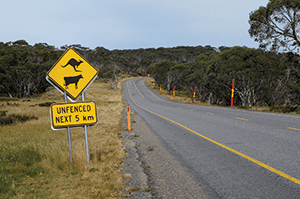
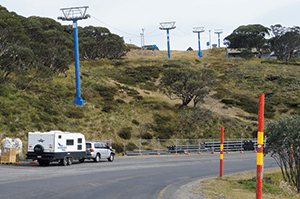
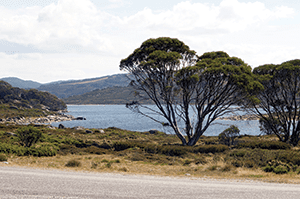
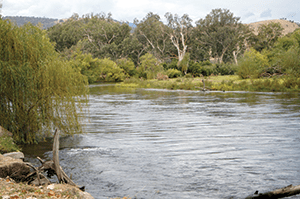
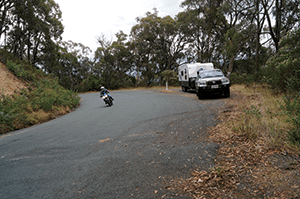
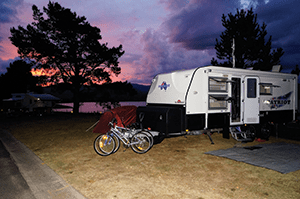
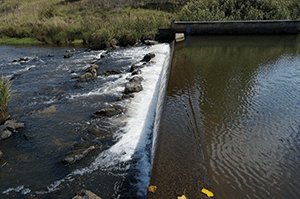
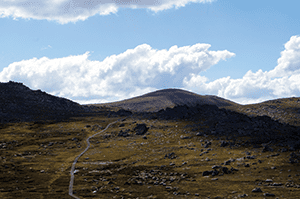
The more aggressive I was on the throttle, the more the fans responded to cool the transmission fluid, and we were glad to see the temperature reduce to a more controllable level during the climb.
The trip down the other side was a relief because we knew we had just conquered the longest and steepest climb we were ever likely to take the caravan on. At one stage of the climb near the peak, the fuel burn since stopping at Murray 1 was a staggering 55.5 litres per 100km, but by the time we stopped for lunch at Tom Groggin on the other side of the hill we had averaged out at just under a more respectable 20 litres per 100km.
Phew.
The road down through Geehi and Tom Groggin was excellent and in no time we were rolling past Thredbo Resort on our way to Lake Jindabyne where we broke with tradition and stayed on the shore of the lake in a caravan park for a few days to take in the area in much more detail.
A national park pass must be bought to visit Charlotte Pass and Mount Kosciuszko ski fields. It is worth every cent because the views and scenery along the way are absolutely top shelf. We were surprised to realise Australia’s highest mountain was not a massive steep peak but more a rounded mountain a bit higher than some of its neighbours depending on the distance and angle you viewed it from.
The chairlift up from Thredbo takes you to the start of the walking track to Mount Kosciuszko, and that walk is a good test of cardiovascular fitness. By jove, after that it was nice to sit down for a coffee at the Eagles Nest Restaurant at 1936m above sea level.
The sunsets and lifestyle activities at Jindabyne made it a place worth spending several days, but sometimes it is just the simple things like walking across the weir over the Snowy River at Dalgety that give the biggest thrill.
As I mentioned, we enjoy a bit of adventure on our trips around Australia, but in comparison the trip home from there was pretty boring and totally uneventful. The LandCruiser is certainly a solid tow tug that just keeps on chugging no matter where we point it and the 20’6” Sunland Patriot caravan could not be faulted on the whole trip and we will be hanging onto it for the long haul.
After three months away it’s always nice to be home and back into plenty of bar crossing work and fishing tuition until we decide to take off somewhere again. In the interim, if any readers are planning a big caravan trip, feel free to contact me for a bit of helpful advice on what you will need and how to dodge some of the typical pitfalls that can be easily avoided.
 Bush ‘n Beach Fishing Magazine Location reports & tips for fishing, boating, camping, kayaking, 4WDing in Queensland and Northern NSW
Bush ‘n Beach Fishing Magazine Location reports & tips for fishing, boating, camping, kayaking, 4WDing in Queensland and Northern NSW

